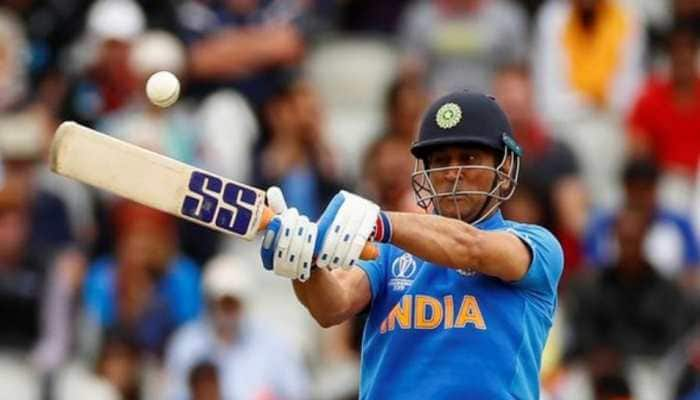India`s screen divas are symbols of Indian femininity: Neville Tuli
Women in Indian cinema have portrayed all facets of change which women in general have experienced in real life in the country, says Neville Tuli, the founder and chairman of Mumbai-based arts and popular culture platform ‘Osian`s’.
Trending Photos
)
New Delhi: The divas of Indian cinema are works of art immortalised down the ages on screen and in the media. Women in Indian cinema have portrayed all facets of change which women in general have experienced in real life in the country, says art connoisseur Neville Tuli, the founder and chairman of Mumbai-based arts and popular culture platform ‘Osian`s’.
"The character of the woman on the Indian screen ranges from the Mother Goddess to the devoted mother and wife to the righteous woman who surrenders her role as mother and wife to something beyond," Tuli told IANS in an interview.
Tuli, who has one of the largest archives of cinema-related popular art in the country, will inaugurate the annual Osian-Cinefan film festival July 27-Aug 5 in the national capital with a tribute: "The Divas of Indian Cinema - 100 Years of Beauty and Grace".
The showcase will mark the beginning of a new initiative - The Osianama Art & Film Museum - later in the year. The archive will mount travelling exhibitions on cinema art across the world.
Tuli said the July showcase will bring to the national capital a chronological sequence of the country`s leading screen ladies with pioneers like Sulochana, Zubeida, Gohar, Devika Rani, Fearless Nadia, Suraiya, Kamini Kaushal, Meena Kumari, Geeta Bali, Nargis, Madhubala, Nutan, Waheeda Rehman, Saira Banu, Vyjayanthimala, Asha Parekh, Hema Malini, Mumtaz, Sharmila Tagore, Helen, Jaya Bachchan, Shabana Azmi, Zeenat Aman, Dimple Kapadia, Rekha, Sridevi, Madhuri Dixit, Aishwarya Rai, Vidya Balan, Kareena Kapoor and many more.
The exhibition will use every genre of cinema art like rare posters, show-cards, stills, song-synopsis booklets and published souvenirs to recreate the history of Indian women on screen.
"Cinema has essayed every role that women have played in reality - their dances, hairstyles, attitudes to adultery, emancipation, make-up, driving sports cars, stealing, terrorising, killing, gender empowerment and the like in the last 100 years," Tuli said.
The art connoisseur, who has been archiving cinema for nearly two decades, said Indian movies have focussed on powerful women-driven roles throughout history.
"Whenever the male superstar-dominated mainstream cinema felt dominated either by the romantic hero or the angry young man, there was Nargis` `Anhonee` for every `Shri 420`. For every `Anand`, there was Waheeda Rehman`s `Khamoshi` and for every `Darr`, there was Dimple Kapadia`s `Rudaali`.
"Each of these movies may have achieved different box office success, but that should not distract from the fact that directors and producers are creating women-centric movies all the time," Tuli said.
He said the exhibition "has been planned as a major travelling show with an ensuing publication".
Commenting on the trends in Indian cinema, Tuli said, "Our heroes (even ladies) do not grow up because the filmmakers assume that the audience has not grown up."
"Talent is not supported on the scale India demands and hence our cinematic culture remains weak. Loving cinema is the only way a spectator participates with the world of filmmaking.
"There must be a hundred ways to participate in filmmaking when a true cinematic culture exists," Tuli said. That culture places the pressure to create with vision and boldness; to experiment and play; and to dare and break mindsets, he added.
According to Tuli, Indian cinema`s publicity material "might lack western sophistication, but mostly there`s a lack of respect for our history and lack of vision".
"The transformation of unique art works which emerge from the publicity material of Indian cinema will become global collectibles only when our people recognise and respect history. And like modern and contemporary art, take pride in preserving and collecting, along with understanding their scarcity," Tuli said.
The cinema and art archivist added: "Hollywood memorabilia succeeds because of the participation from their fraternity".
"They respect their work and the work of others and they worship and privilege the history which has gone before them. Here we still treat it as `raddi` or kitsch. It will change radically in the future," he said. Business-wise, cinema art can best be viewed as "where the Indian modern and contemporary art market was poised 10 years ago".
"It is at ground zero - basic the infancy of a market. The boom is to begin through the work one has initiated over the last decade," Tuli said.
IANS
Stay informed on all the latest news, real-time breaking news updates, and follow all the important headlines in india news and world News on Zee News.
Advertisement
Live Tv
Advertisement







)
)
)
)
)
)
)
)
)
)
